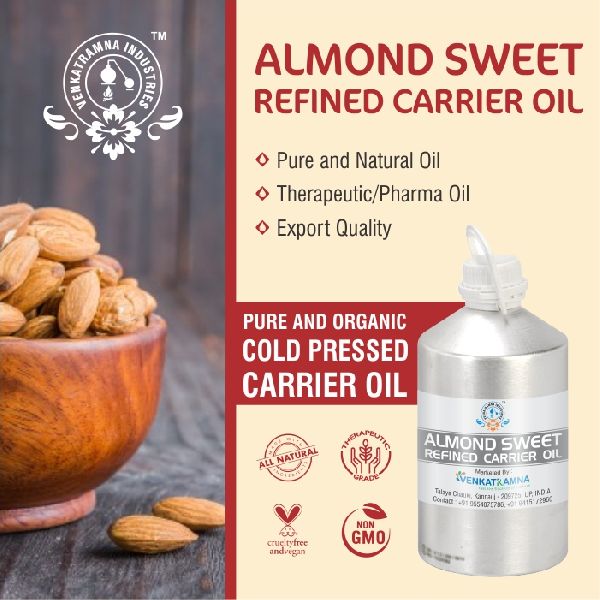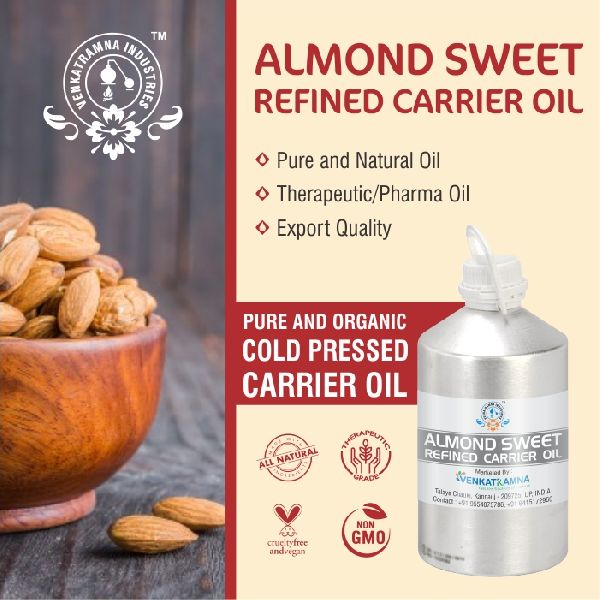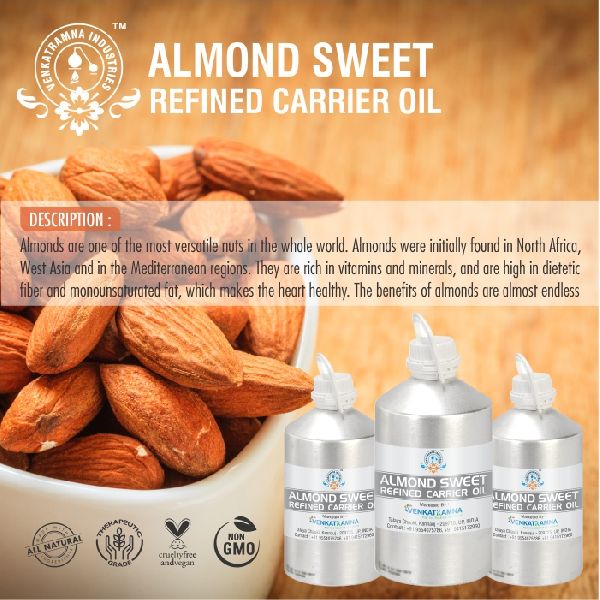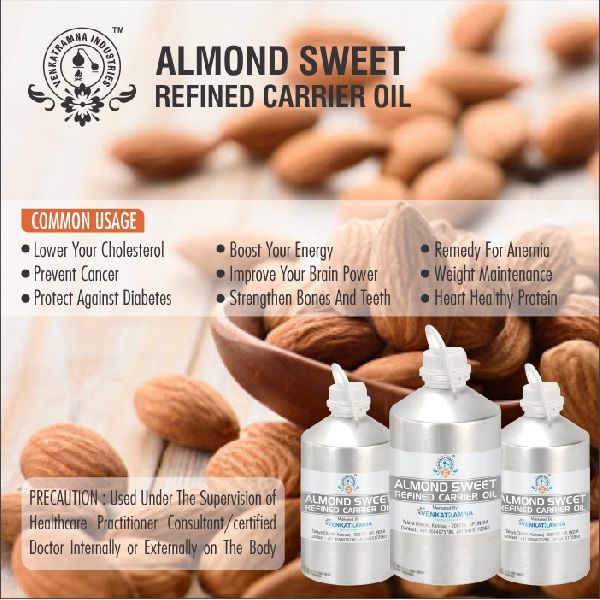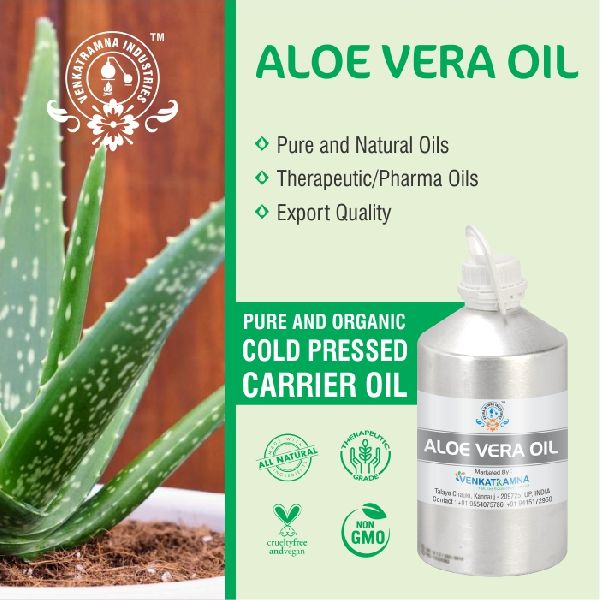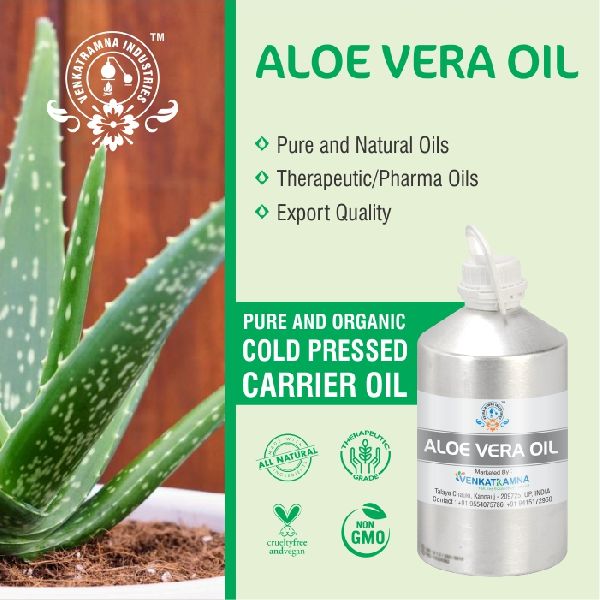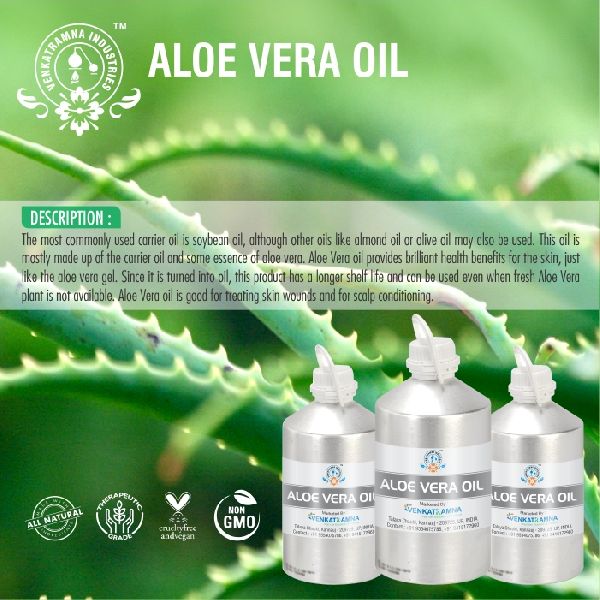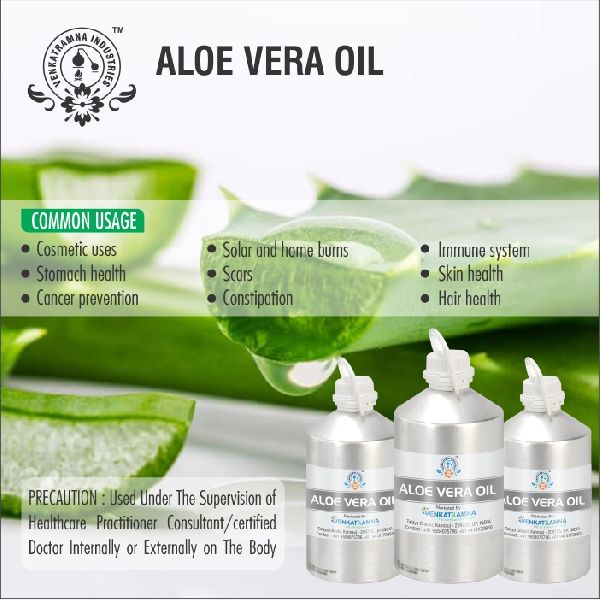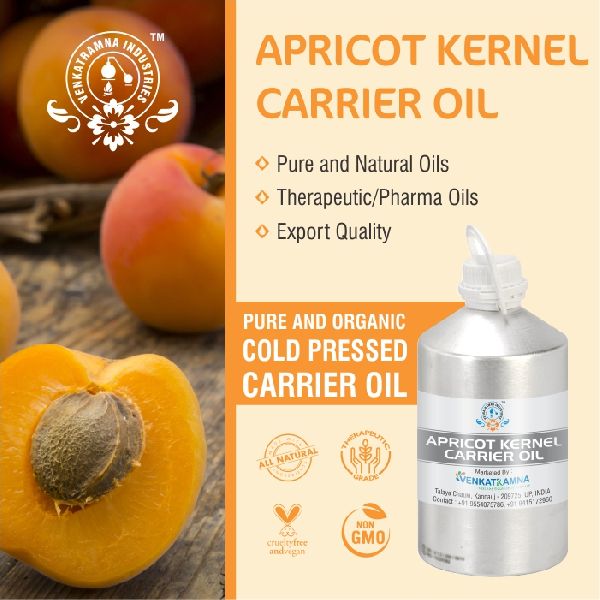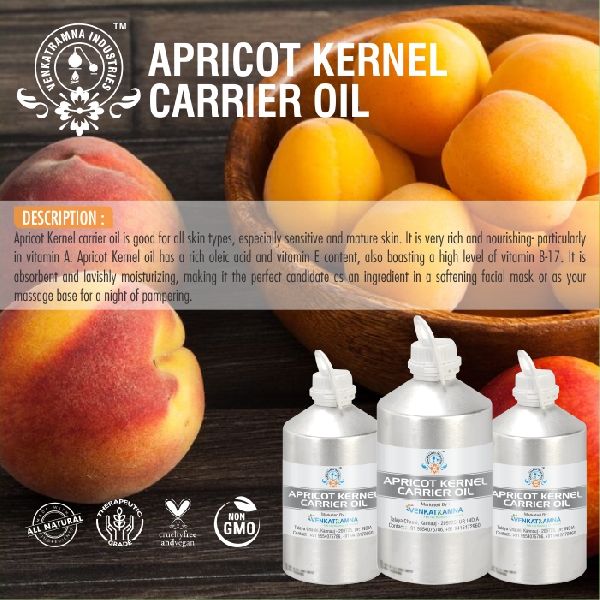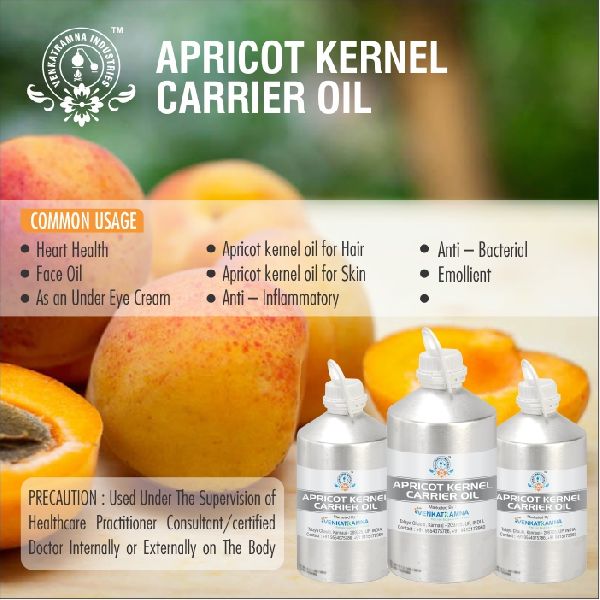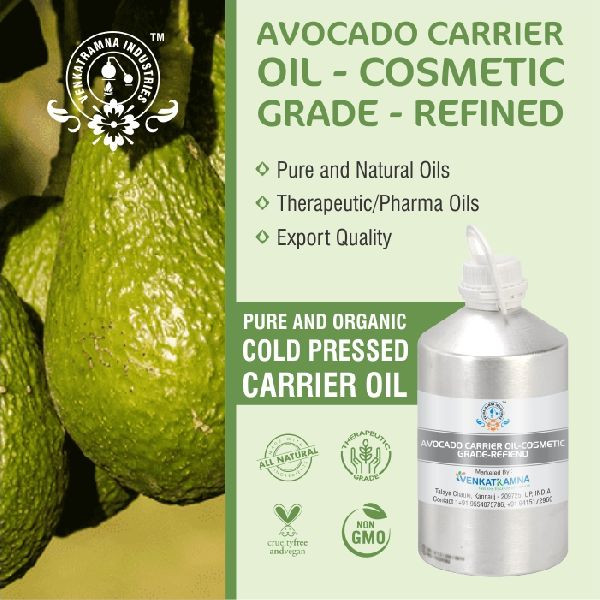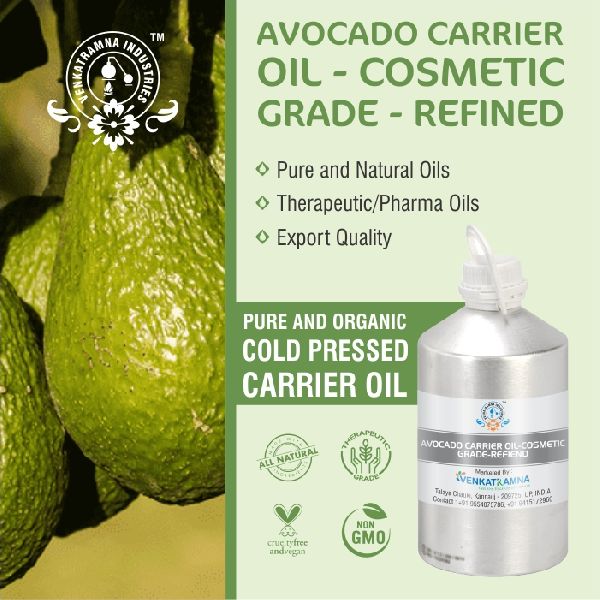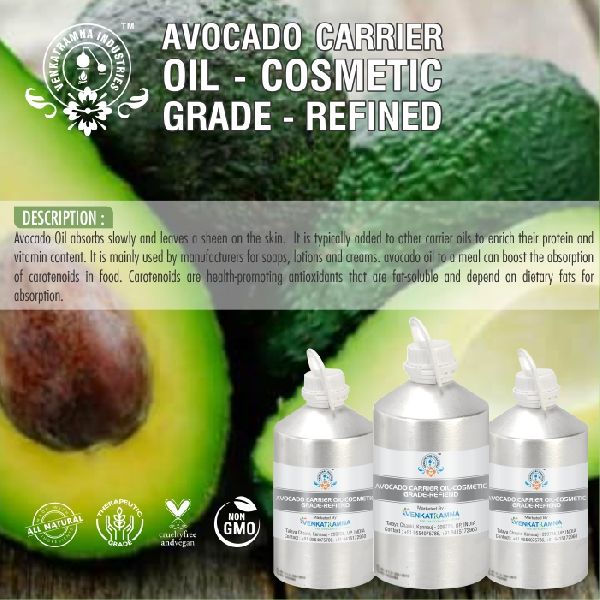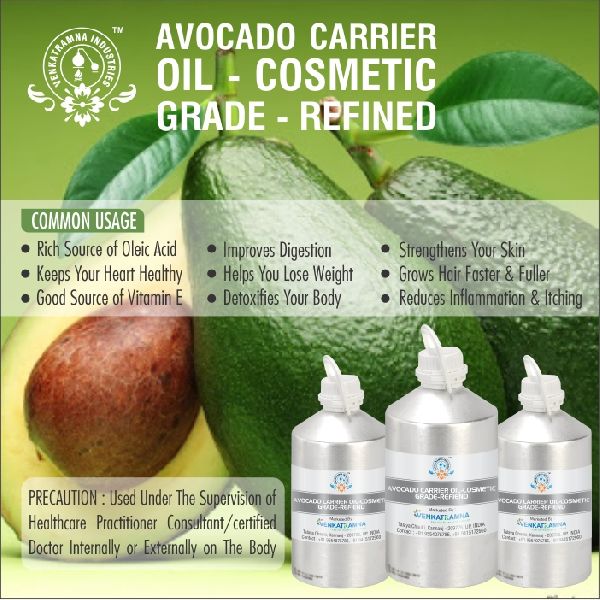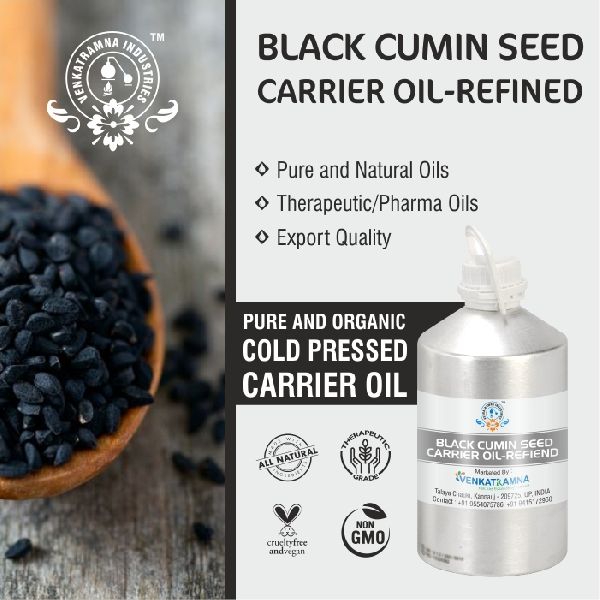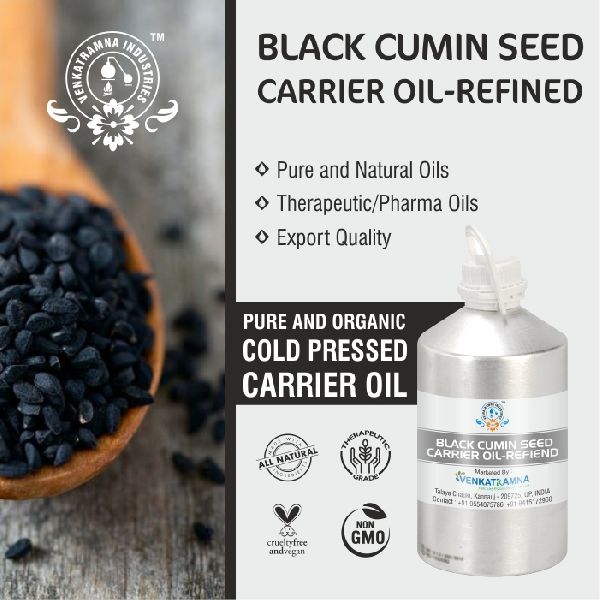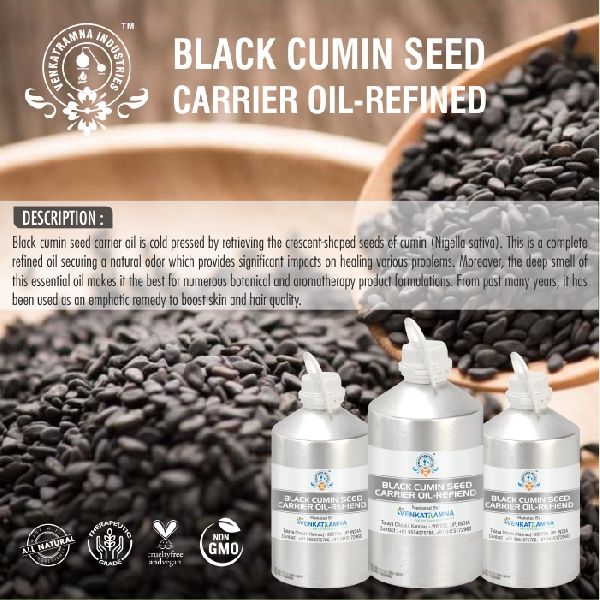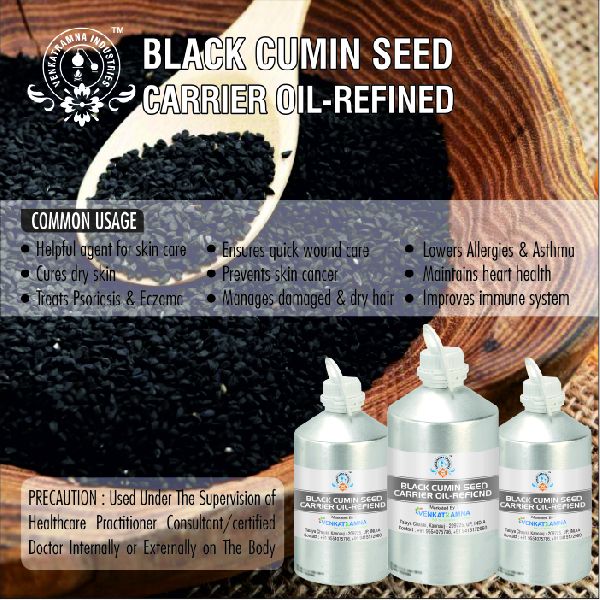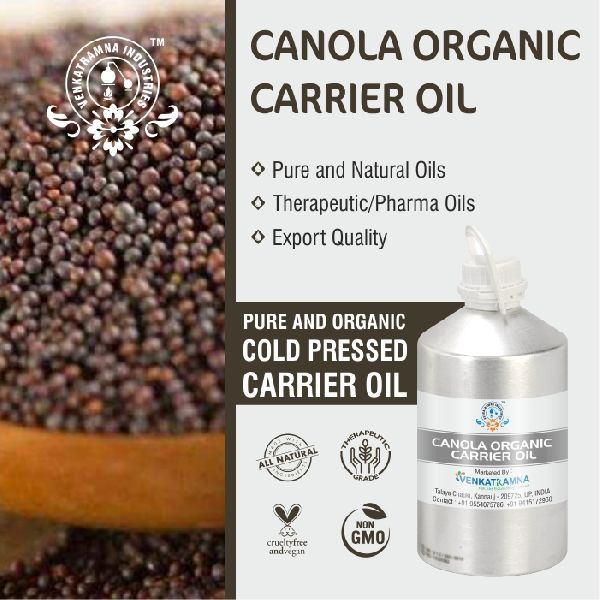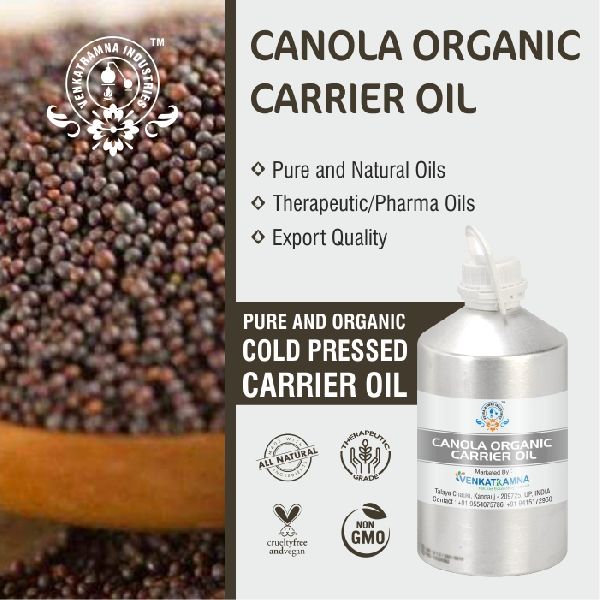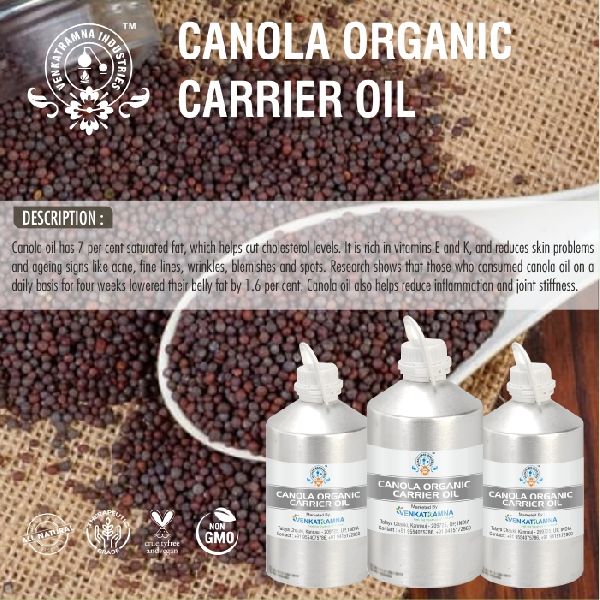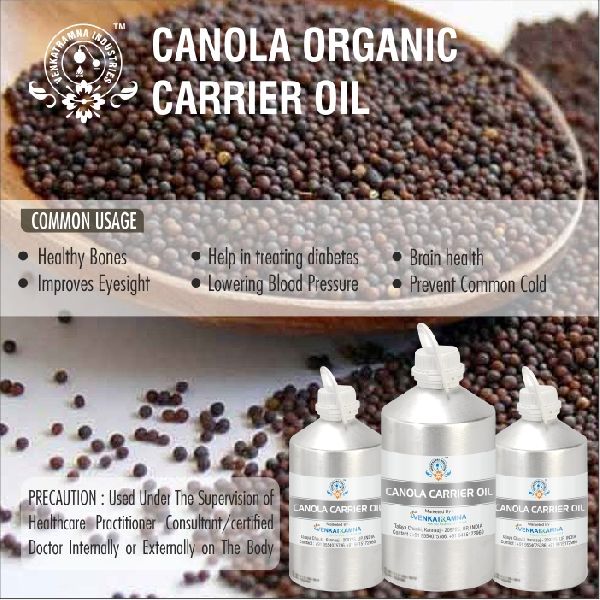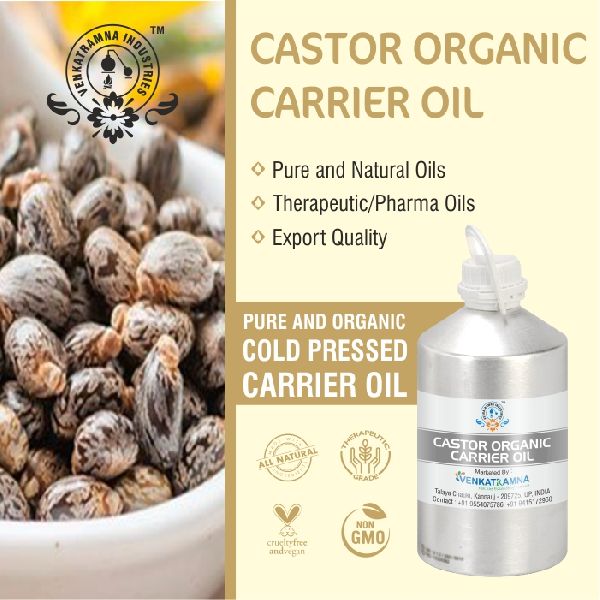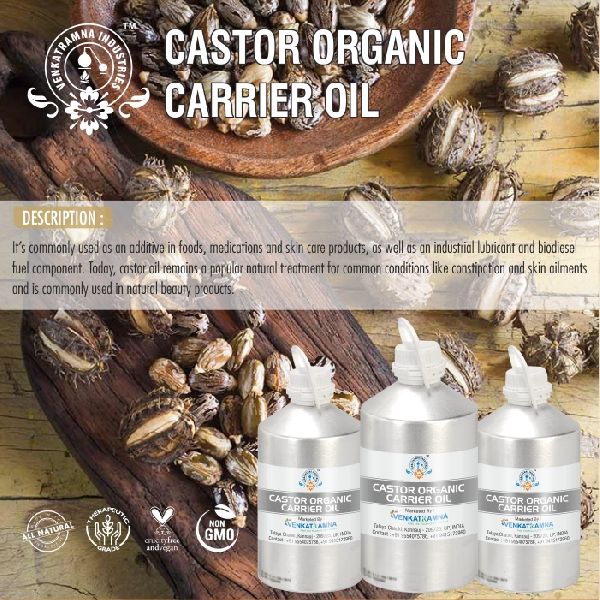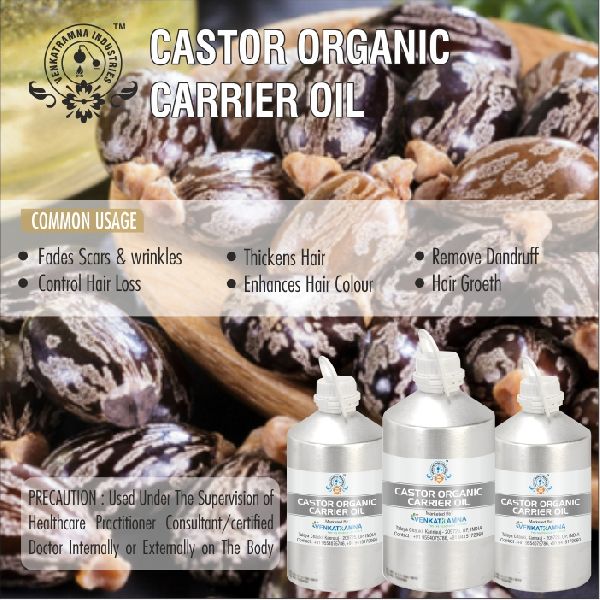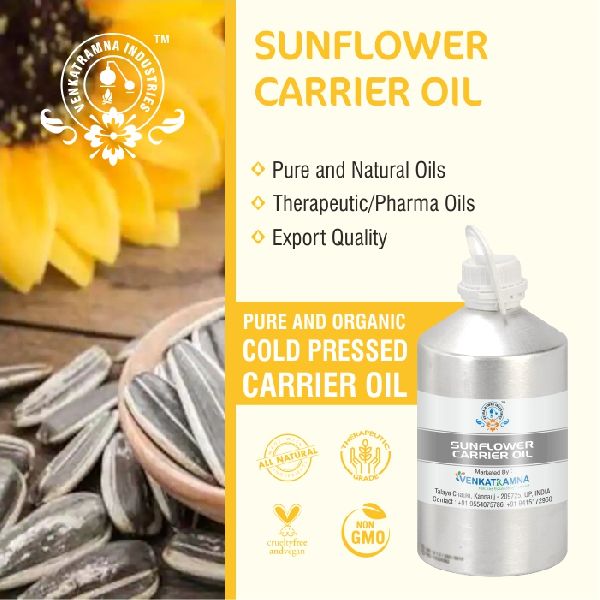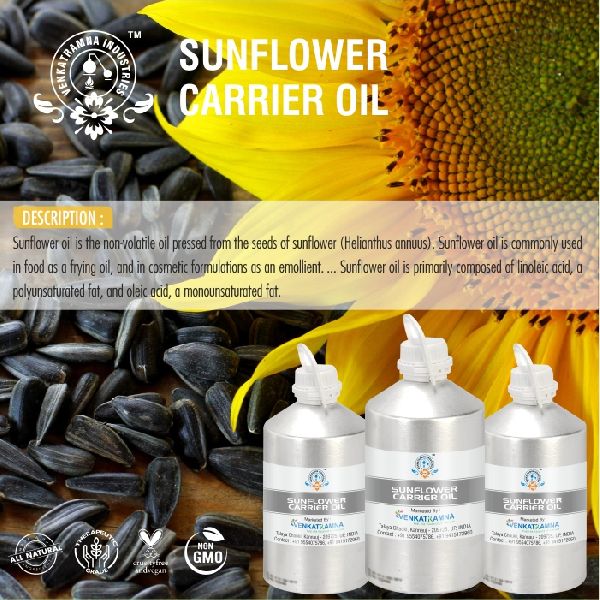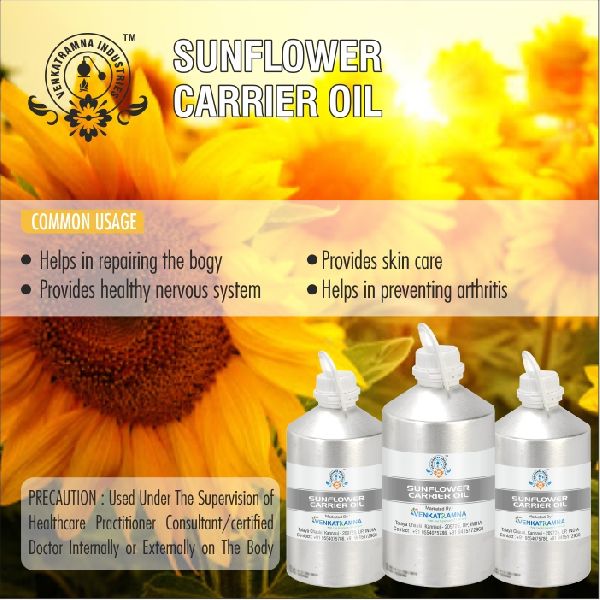Indra Nagar, Kanpur, Uttar Pradesh - GST No. 09AVOPS2676K1ZN
- Send SMS
- Send Email
Cold Pressed Carrier Oil
Leading Manufacturers, Exporters, Wholesaler and Retailer of Almond Carrier Oil, Aloe Vera Carrier Oil, Apricot Carrier Oil, Avocado Carrier Oil, Black Cumin Refined Carrier Oil, Canola Organic Carrier Oil, Castor Organic Carrier Oil and Sunflower Carrier Oil from Kanpur.
MOQ : 1 Kilogram
| Business Type | Manufacturer, Exporter, Supplier, Retailer, Wholesaler |
| Country of Origin | India |
| Type | Cold Pressed Carrier Oil |
| Brand Name | Venkatramna Industries |
| Certification | FSSAI |
| Application | Aromatherapy And Massage |
| Color | Pale Yellow To Brown |
| Product Code | VRI/NE/02-001 |
| Payment Terms | Other |
| Delivery Time | 2 Days after payment confirmation |
Preferred Buyer From
| Location | Worldwide |
The bitter almond tree (Prunus dulcis, var. amara) also produces an almond, but broader and shorter in shape. From these is produced a lesser quality of the fixed oil along with an emulsion which yields glucose, cyanide, and the essential oil of bitter almonds, which is nearly pure benzaldehyde.
The health benefits of bitter almond essential oil can be attributed to its properties as a vermifuge, febrifuge, bactericidal, germicidal, fungicidal, sedative, anesthetic, aperient, diuretic, anti-intoxicating, anti-carcinogenic, and antispasmodic substance.
Almonds and almond oil date back to pre-biblical times and were mentions in the bible as well. The benefits of almond oil were well known in Greece and Italy prior to the Christian era. Almonds were mentioned in old Greek mythology, as well as in classical Shakespearean writings. Domestic almonds are said to have first appeared during the bronze age, between 3000 and 2000 B.C. and were one of the earliest domestic trees used for their seeds and oil.
Tree produce large, smooth almonds and offers 60-65% edible kernel per nut. The ‘tuono’ has thicker, hairier shells and offers only 32% of edible kernel per nut, but having a thick shell has advantages. The ‘Tuono’s shell protects the nut from threatening pests such as the naval orange worm. ARS researchers have managed to crossbreed the pest-resistant ‘Tuono’ tree with ‘Nonpareil’, resulting in hybridized cultivars of almond trees that are self-pollinated and maintain a high nut quality. the new, self-pollinating hybrids possess quality skin color, flavor, and oil content, and reduce almond growers’ dependency on insect pollination.
| Business Type | Manufacturer, Exporter, Supplier, Retailer, Wholesaler |
Preferred Buyer From
| Location | Worldwide |
Aloevera is a , familar plant, throughout the world. A semi-tropical plant with over 250 species and a colourful history. Aloe Vera (meaning True aloe) describes aloe Barbadensis Miller, most commonly used for its medicinal properties. It is the most discussed but least understood medicinal plants in history. The healing properties are found in the yellowish to liver coloured offensive smelling, bitter tasting Juice of aloe Barbadensis Miller. Aloevera looks like cactus but it is from the lily family. It is a semi tropical plant, out of 200 species Barbadensis miller has medicinal properties. Aloevera is perennial plant with a thick & fleshy, juicy leaf which is between 40 to 50cm in length has throny edges and 8 to 10cm wide, it is used all over for small diseases but can be used for more than 200 diseases. Aloevera can be cultivated in large scale for its medicinal purposes.
Aloevera is a , familar plant, throughout the world. A semi-tropical plant with over 250 species and a colourful history. Aloe Vera (meaning True aloe) describes aloe Barbadensis Miller, most commonly used for its medicinal properties. It is the most discussed but least understood medicinal plants in history. The healing properties are found in the yellowish to liver coloured offensive smelling, bitter tasting Juice of aloe Barbadensis Miller. Aloevera looks like cactus but it is from the lily family. It is a semi tropical plant, out of 200 species Barbadensis miller has medicinal properties. Aloevera is perennial plant with a thick & fleshy, juicy leaf which is between 40 to 50cm in length has throny edges and 8 to 10cm wide, it is used all over for small diseases but can be used for more than 200 diseases. Aloevera can be cultivated in large scale for its medicinal purposes.
| Business Type | Manufacturer, Exporter, Supplier, Retailer, Wholesaler |
Preferred Buyer From
| Location | Worldwide |
Apricot, Prunus armeniaca L., is a member of the Rosaceae family, along with apple, pear, peach, and other stone fruits. The apricot is found in the Prunophora subgenus within Prunus along with plums. Hybrids between plums and apricots have been produced recently which are said to be finer fruits than either parent. A “Plumcot” is 50% plum, 50% apricot; an “Aprium” is 75% apricot, 25% plum; and the most popular hybrid, the “Pluot” is 75% plum, 25% apricot.
Apricots are small to medium sized trees with spreading canopies. They are generally kept under 12′ in cultivation, but capable of reaching 45 ft in their native range. The one-year-old wood and spurs are thin, twiggy, and shorter lived than those of other stone fruits. Leaves are elliptic to cordate, with acute to acuminate tips, about 3″ wide; wider than leaves of other stone fruits. Leaves have serrate margins and long, red-purple petioles.
The apricot was originally domesticated in China but is now cultivated on every continent except Antarctica. Archaeological evidence shows that apricots were eaten in ancient Armenia, and they were first introduced to the New World in the early 18th century by Spanish missionaries in California. In 2011, the top five producers of apricots were Turkey, Iran, Uzbekistan, Italy, and Algeria.
| Business Type | Manufacturer, Exporter, Supplier, Retailer, Wholesaler |
Preferred Buyer From
| Location | Worldwide |
The genus Persea is of African-Laurasian origin, with the subgenus Eriodaphne originating in Africa and with the subgenus Persea probably also originating in Africa, entering south-west Laurasia, and then rafting to its present position with tropical North America. Contrary to classification suggestions that identify either the Mexican or the Guatemalan horticultural race as botanically distinct from the other race plus the Lowland (West Indian) jointly, the preponderant evidence favors classifying all three races as equidistant botanical varieties. These three varieties then become Persea americana var. americana Lowland (“West Indian”), var. drymifolia (Mexican) and var. guatemalensis (Guatemalan). The Lowland (West Indian) variety appears to be the most distinct of these three races.
The avocado is a dense polymorphic broad-leaved aromatic evergreen tree species of the genus Persea classified in the division Magnoliophyta, class Magnoliopsida, order Magnoliales of the flowering plant family Lauraceae (Myrtle). Camphor (C. camphora), cinnamon (Cinnamomum zeylanicum), sassafras (Sassafras albidum), European bay (Laurus nobilis), and California bay or Oregon myrtle (Umbellularia californica) and laurels are related species. It is fast growing plant and reaching a height of 20 m with age whilst grafted trees are usually 8-10 m tall, although usually less, and generally have a low branched trunk and an irregular. Some cultivars are columnar, others selected for nearly prostrate form. It makes a good espalier plant for certain cultivar.
| Business Type | Manufacturer, Exporter, Supplier, Retailer, Wholesaler |
Preferred Buyer From
| Location | Worldwide |
Black cumin seed oil has been used for health and wellness for thousands of years. In it, you’ll find vitamins, minerals, essential fatty acids and even compounds that improves cell growth. It’s been called a veritable fountain of youth.
Black cumin seeds come from a plant called Nigella sativa. The plant is sometimes called black caraway or fennel flower too, and it’s a totally different plant from the cumin that you normally cook with. That kind of cumin comes from Cuminum cyminum and is related to parsley.
Archaeological evidence about the earliest cultivation of N. sativa “is still scanty”, but N. sativa seeds were found in several sites from ancient Egypt, including Tutankhamun’s tomb. Seeds were found in a Hittite flask in Turkey from the second millennium BCE.
Nigella sativa black-caraway, also known as nigella (or kalonji), often called black cumin, is an annual flowering plant in the family Ranunculaceae, native to south and southwest Asia.
Nigella sativa grows to 20-30 cm (7.9-11.8 in) tall, with finely divided, linear (but not thread-like) leaves. The flower is delicate, and usually colored pale blue and white, with five to ten petals. The black caraway fruit is a large and inflated capsule composed of three to seven united follicles, each containing numerous seeds which are used as spice, sometimes as a replacement for black cumin.
| Business Type | Manufacturer, Exporter, Supplier, Retailer, Wholesaler |
Preferred Buyer From
| Location | Worldwide |
Brassicaceae, formerly Cruciferae, the mustard family of flowering plants (order Brassicales), composed of 338 genera and some 3,700 species. The family includes many plants of economic importance that have been extensively altered and domesticated by humans, especially those of the genus Brassica, which includes cabbage, broccoli, Brussels sprouts, kale, kohlrabi, napa cabbage, turnip, and rutabaga. Other important agricultural crops in the family include horseradish, radish, and white mustard. A number of species—such as basket-of-gold, candytuft, and honesty—are grown as ornamentals, and some members of the family are considered invasive species in regions outside their native range.
Brassica is the second largest oilseed crop after soybean (Glycine max (L.) Merr.) in world oilseed production (FAO, 2010; Raymer, 2002). Of the 37 species in the Brassica genus, the 4 most widely cultivated species for oilseed and vegetables are Brassica rapa L., B. juncea (L.) Czern. &Cosson, B. napus L., and B. carinata A. Braun. (Raymer, 2002; Rakow, 2004; Sovero, 1993). Oleiferous brassicas are generally derived from two species, B. napus L. and B. campestris L. (syn. B. rapa L.) B. campestris is also referred to by such names as toria, sarson, summer turnip rape, and Polish rape. Similarly, different names are also given to B. napus such as Argentine rape, Swede rape, and colza (Gupta and Pratap, 2007; Kalia and Gupta, 1997). All rapeseed-contributing cultivated Brassica spp. are highly polymorphic including oilseed crops, root crops, and vegetables such as Chinese cabbage, broccoli, and Brussels sprouts. However, a few of them are cultivated as salad, vegetable, and condiment crops as well.
| Business Type | Manufacturer, Exporter, Supplier, Retailer, Wholesaler |
Preferred Buyer From
| Location | Worldwide |
Ricinus communis L. (Euphorbiaceae), commonly known as castor oil plant, is a soft wooden small tree developed throughout tropics and warm temperature regions. This plant is indigenous to the southeastern Mediterranean Basin, Eastern Africa, and India but is widespread throughout tropical regions and is widely used as an ornamental plant. The plant is known to display antimicrobial activity and has been used to treat several ailments. Its leaf, root, and seed oil are used in inflammation treatment, liver disorders, hypoglycemic, and as a laxative. In Tunisia, the plant is used as a contraceptive. The plant is also used in African folk medicine in the treatment of warts, cold tumors, and indurations of mammary glands, corns, and moles. The anti-inflammatory, antioxidant, antimicrobial, and cytotoxic activities of the plant was demonstrated.
Ricinus communis L. (Euphorbiaceae), commonly known as castor oil plant, is a soft wooden small tree developed throughout tropics and warm temperature regions. This plant is indigenous to the southeastern Mediterranean Basin, Eastern Africa, and India but is widespread throughout tropical regions and is widely used as an ornamental plant. The plant is known to display antimicrobial activity and has been used to treat several ailments. Its leaf, root, and seed oil are used in inflammation treatment, liver disorders, hypoglycemic, and as a laxative. In Tunisia, the plant is used as a contraceptive. The plant is also used in African folk medicine in the treatment of warts, cold tumors, and indurations of mammary glands, corns, and moles. The anti-inflammatory, antioxidant, antimicrobial, and cytotoxic activities of the plant was demonstrated.
| Business Type | Manufacturer, Exporter, Supplier, Retailer, Wholesaler |
Preferred Buyer From
| Location | Worldwide |
Sunflower (Helianthus annuus) is grown as an oilseed crop worldwide in temperate and subtropical climates. Among oilseeds, sunflower generally ranks fifth behind soybeans, rapeseed, cottonseed, and peanuts, with an average annual world production of 21–27 million metric tons (Mt). Unlike soybean, sunflower is primarily an oil crop, with high protein meal being a by-product. Sunflower is grown on every continent, with Argentina, the former USSR, Eastern Europe, the European Union, and the United States being the largest producers.
Sunflowers grow in dry areas, so they are heavily influenced by environmental conditions. Sunflower yield increased drastically after hybrids entered production in the 1980s, but sunflower yield has changed little right up to today. Therefore, sunflower breeders should investigate this lack of heterosis by planning new plant designs utilizing both land races and wild species. Seed yield is mostly related to three main characters: plants per hectare, seeds per plant, and seed weight. Physiologically, these traits are mostly related to higher photosynthesis, nutrient uptake, and water use efficiency rate.
Sunflower oil is a non-comedogenic carrier oil which is highly absorbent and won’t clog pores. It’s non-irritating for most people, and can be used on all types of skin, including dry, normal, oily, and acne prone.

